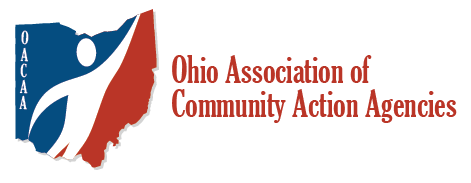The following article was originally published in Growth Partnership for Ashtabula County’s 2018 Best of Ashtabula County Awards program.
Workforce Innovation Award – Ashtabula County Community Action Agency: Strong Foundations, Successful Futures
Several years ago, at the urging of State Representative John Patterson, community leaders came together to explore a Community Learning Center (CLC) approach in the Ashtabula Area City School (AACS) district as a means of enhancing student performance as well as create a platform for life-long learning and success. Typically, a CLC uses the school and its facilities as a hub to connect the community and the school.
Within this hub social, health, education, recreational and enrichment activities, support services, and programs can be offered. These are designed to be accessible not only by students and their families, but also by the community at large. In such models the school is seen as an anchor that provides stability.
Rep. Patterson encouraged community leaders to collaborate on an initiative that could potentially, in the long term, raise students test scores.
Ashtabula County community Action Agency stepped forward to lead the Community Engagement process and the CLC advisory Group, as the project scope clearly fell within the Agency’s mission.
The CLC Advisory Group, comprised of representatives from Ashtabula county Community Action Agency, Community Counseling Center, and the Ashtabula Area City Schools, has been working to define a long-term vision where the school provides educational, recreational, cultural, health and social services.
While the project centers around the schools, Ashtabula Area City Schools Superintendent Mark Potts sees this as having the potential to hugely impact the entire community in a positive manner. “There are so many possibilities as to how this can impact student achievement. It’s about removing obstacles from student’s abilities to be successful, and it’s about what is best for kids.”
According to Carmen Kuula, Ashtabula County Community Action Agency Resource and Development Director, “Strong Foundations, Successful Futures’ was chosen to identify the belief that a solid base of knowledge and experience are the building blocks to life-long learning and success. By addressing basic needs that prevent students from being “ready-to-learn”, by removing barriers to participation, by providing learning opportunities that really engage the students, by helping to identify career pathways that utilize the natural skills and abilities of the students, by developing communication and connections with the parents, and by rallying the resources of the community, we can establish the groundwork for students, families, and the community to be the best they can be.”
Over the past year and a half, several visits were conducted to communities and school districts that have implemented such models. The purpose of the visits was to determine if a CLC would be a viable approach for the area as a means to provide all students the opportunity to do well. It became very clear that what the CLC looks like varies greatly based on the specific community wants and needs. How and what will help families can only truly be determined by asking.
The CLC Community Engagement Project was launched to identify the needs, wants, and values of the citizens in the Ashtabula area.
The conversation with community members focused on three basic things: what support services and programs they need, want, and value; determining the extent they would use such services if they were available within the school; and gathering ideas for strengthening the ties between the community and the schools.
Kuula explained that this model really embraces the entire family, and draws the Ashtabula community into the school network. “The Community Learning Center will be providing not only programs for the students, but for the parents and the community at large. Services such as job search, resume writing, interview skills, money management, GED, computer, and language classes for example. It will utilize the school and its facilities to connect students and families with resources and programs that will help them to be successful in school and in life.”
Community Action Executive Director Judith Barris, shared that “One key is having children successfully bridge barriers to educational success-whether that be proper nutrition, health care, counseling, job training or many other ways to help children break the cycle of poverty.” Providing ease of access to services that can spur educational attainment are steps to assist families along the way.
The CLC Community Engagement Project is a vital first step in a major commitment to truly transform the system and reposition the school as an anchor for successful lifelong learning. The CLC proposes rallying community resources within the school system to aid the growth and development of students and families in a manner that is complimentary to the academic vision.
“Besides the medical and dental services, this concept supports a host of things that can be done to help community members become successful.” Said Potts.
Rep. Patterson sees this continued process as an incredible step forward for the community. “People become engaged and view the school as a beacon of hope.”
